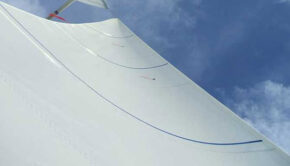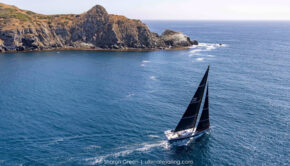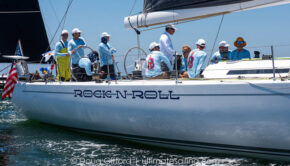Complexity of Boat Measurement
Published on July 14th, 2015
It would seem that measuring the dimensions of a boat would be what fits into a box, but our sport struggles with simple explanations. Furthering the complexity is how handicap rating rules view dimensions, as not all measurements impact performance.
Take for example the 1907 schooner Martha which is competing in the 2015 Transpac Race. Her hull length is 68-feet but her sparred length, which includes bow and stern sprits, is 84-feet. While a rating rule might be more interested in the hull length, the sparred length also has logistical relevance.
Donald Street sheds more light on the subject, as only he can…
Sparred length began getting quoted in the early 1980’s during the re-build, restoration of Gaff-rigged boats racing in the Med. For bragging rights in the bars, the skippers and owners quoted sparred length, which is the length from the end of bowsprit at the bow to end of the boom at the stern.
However, when quoting length to Marina managers or the Port Captain for paying dockage fees, they always quoted LOD (Length on Deck), except some smart skippers who would quote length from their British registry certificate. This was due which was considerably less than LOD as British registration certificates quote length as per Thames tonnage.
Under Thames tonnage, length was measured from the stem head to the rudder head. Until the fiberglass age, British builders did not quote building cost on the basis of displacement tonnage but rather on the basis of Thames tonnage (length – beam) x beam x 1/2 beam divided by 94.
As a result, all the boat length aft of the rudder head was free, hence the long sterns on the old British built classics. Also, this era had a narrow beam as beam was measured twice. Any increase in beam increased the Thames tonnage and thus building costs, even if the increase in beam did not increase displacement tonnage. Notable too was how draft was not measured at all.
Thus British boats, both racing and cruising, were always narrower, deeper and had longer sterns than US or Canadian built boats of similar size.
Since the vast majority of boats racing in the Med are British built or British designed, and the rule figures that beam slows a boat down, US designed boats rate like bandits, especially the old Herreshoff designs.









 We’ll keep your information safe.
We’ll keep your information safe.